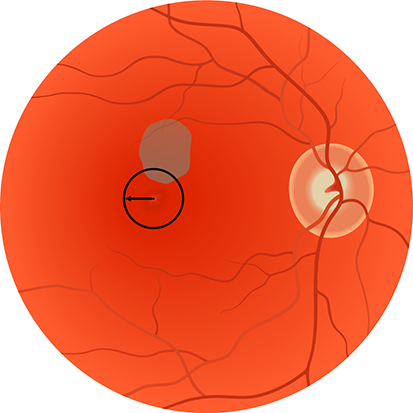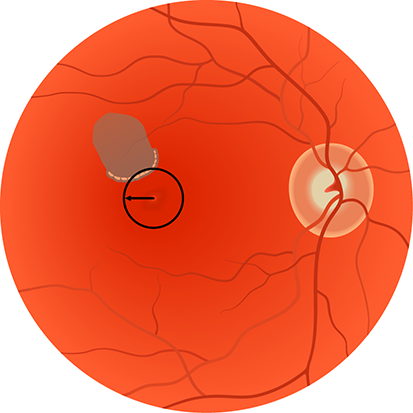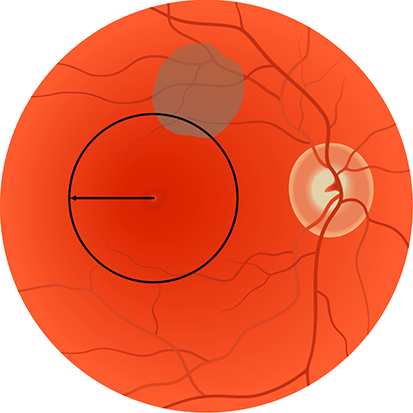Diabetic Macular Edema (DME) is a complex disease process with variable treatment options. Discussions about treatment options could go on and on. But before we get ahead of ourselves, a simple introduction seems prudent.
In 1985, with the publication of the Early Treatment Diabetic Retinopathy Study (ETDRS), the concepts of how to define DME warranting treatment and using laser as first-line therapy were cemented. Since then much has changed, from intravitreal steroids to intravitreal anti-VEGF medications and from clinical evaluation to OCT analysis. And the definitions of whom to treat and when can be confusing.
So let’s sum up the most salient points.
All CSME is DME but not all DME is CSME!
Clinically significant macular edema (CSME) is the standard definition of diabetic retinopathy warranting treatment, and is depicted in the following images. CSME is defined as any of the following:
Figure 1: Retinal thickening, visible with your slit lamp, within 500 microns of the center of the fovea.
Figure 2: Hard exudate within 500 microns of the center of the fovea if it is associated with adjacent retinal thickening that is visible with your slit lamp.
Figure 3: Retinal thickening, visible with your slit lamp, that is 1 disc area in size and within 1 disc area of the center of the fovea.
Note that there is no mention of vision. And there is no mention of OCT. All of the possible definitions are based on your clinical examination.
All of this results in a most interesting corollary:
- If you clinically detect DME that involves the foveal center (a.k.a. center-involving CSME [ci-CSME]), then intravitreal injections are likely to be your best choice.
- If you clinically detect DME that does not involve the foveal center (a.k.a. non-center-involving CSME [nci-CSME]), then laser may be a better option.
- Some cases of CSME are borderline for laser vs. injections. No doubt we could debate many scenarios.
- Some areas of retinal thickening detected on your OCT will not meet criteria for CSME. For example, one or two small cysts without clinically visible retinal thickening does not meet the definition of CSME warranting therapy.
Stay tuned to future editions of the EyeCarePD newsletter, as we will explore this concept using specific case examples.
Always learning,
The EyeCarePD Team


